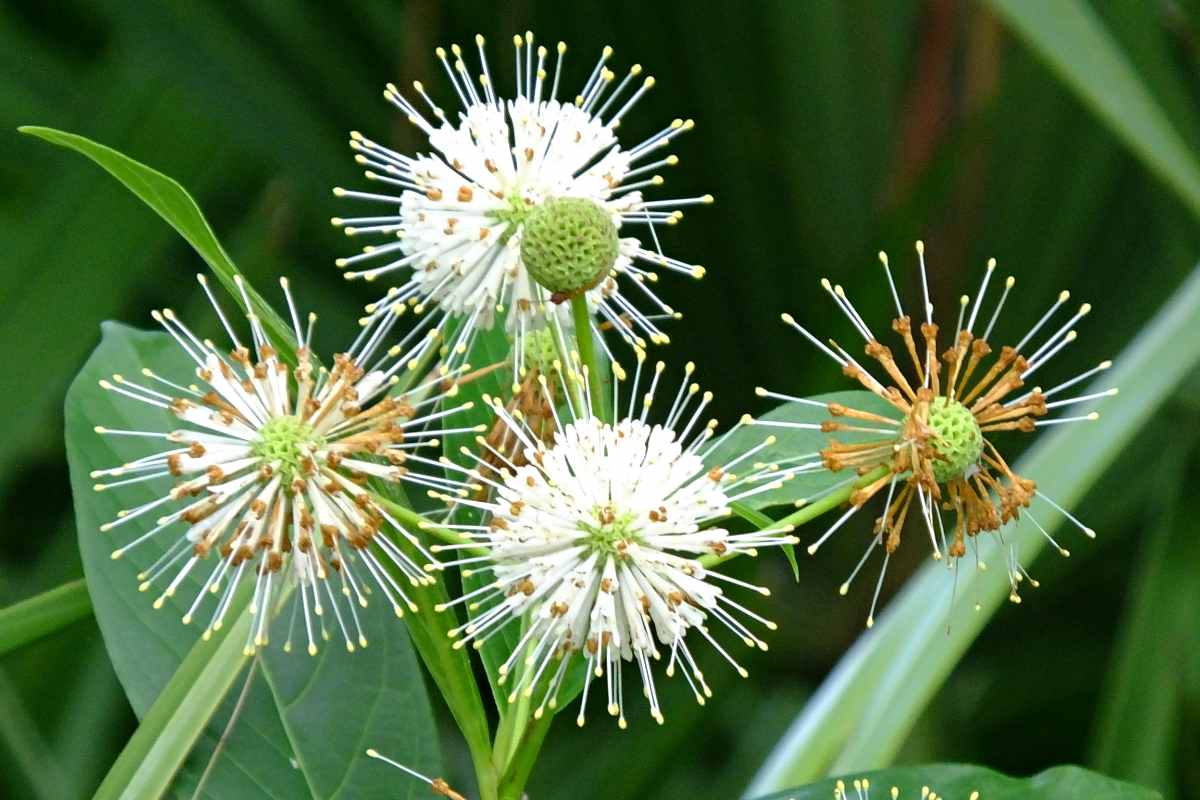
New Hampshire is famously known for its warm, humid summers and cold, snowy winters. With such extreme seasonal differences, this makes it almost necessary to include a few New Hampshire native plants within your landscape.
Plants native to New Hampshire are well-adapted to the ups and downs of the state’s climate, so these plants don’t just survive but thrive. Here’s a list of the best native plants for New Hampshire.
- Best Native Plants for Your New Hampshire Yard
- 1. Black Tupelo (Nyssa sylvatica)
- 2. Blue Cohosh (Caulophyllum thalictroides)
- 3. Boneset (Eupatorium perfoliatum)
- 4. Buttonbush (Cephalanthus occidentalis)
- 5. Highbush Blueberry (Vaccinium corymbosum)
- 6. Labrador Violet (Viola labradorica)
- 7. Marsh Marigold (Caltha palustris)
- 8. Mountain Maple (Acer spicatum)
- 9. White Oak (Quercus alba)
- 10. Winterberry (Ilex verticillata)
- Native Plants vs. Non-Natives
- FAQ About Native Plants of New Hampshire
Best Native Plants for Your New Hampshire Yard
1. Black Tupelo (Nyssa sylvatica)
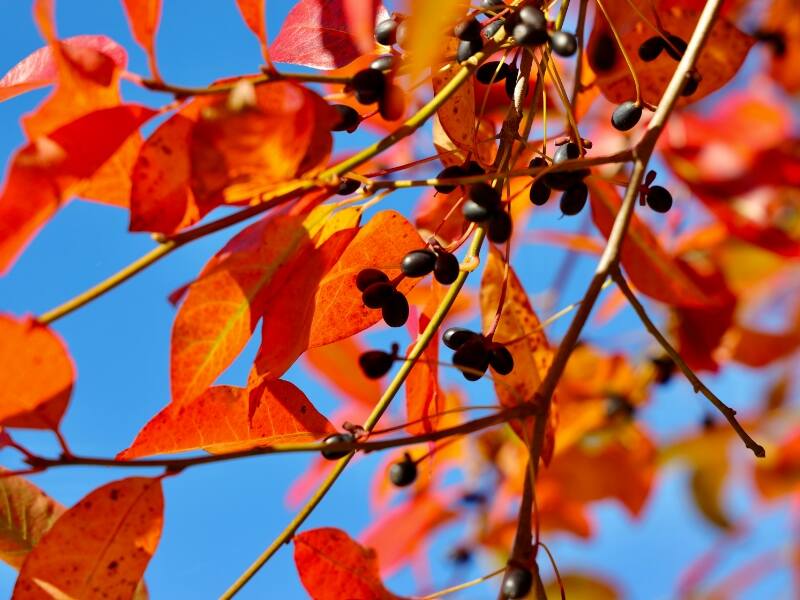
Among the most attractive trees in the U.S., black tupelo, also known as black gum, is a medium-sized tree that grows up to 50 feet tall. Black tupelo grows best in full sun and prefers moist soil with good drainage. The leaves are dark green in summer and bright red in fall.
Black tupelo has a dioecious flowering habit, which means a male and female tree are required to produce fruits. Bees love the nectar from the flowers.
- Growth habit: Tree
- Mature size: Up to 50 feet tall and 30 feet wide
- Duration: Perennial
- Foliage: Dark green in summer and bright red in fall
- Sunlight needs: Full sun to partial shade
- Soil preferences: Sandy, clay, rich, moist, well-drained soil
- Water needs: Moderate
- Potential hazards: Non-toxic
2. Blue Cohosh (Caulophyllum thalictroides)
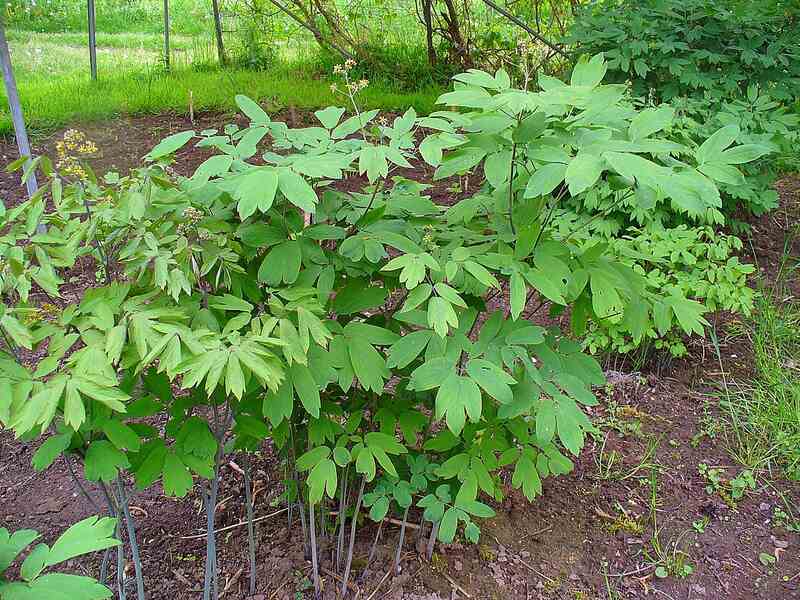
Best grown in partial shade, blue cohosh prefers moist soil with good drainage. It looks beautiful with its blue-green foliage and blooms during spring, producing bright yellow flowers. The flowers mature into bright blue berries during fall.
Blue cohosh attracts bees and flies when in full bloom. Grow this plant cautiously, as it’s toxic to humans and pets.
- Growth habit: Herb
- Mature size: Up to 3 feet tall and a foot wide
- Duration: Perennial
- Foliage: Blue-green, with bright yellow flowers
- Sunlight needs: Partial shade
- Soil preferences: Rich, moist, well-drained soil
- Water needs: Moderate
- Potential hazards: Toxic to humans and pets
3. Boneset (Eupatorium perfoliatum)
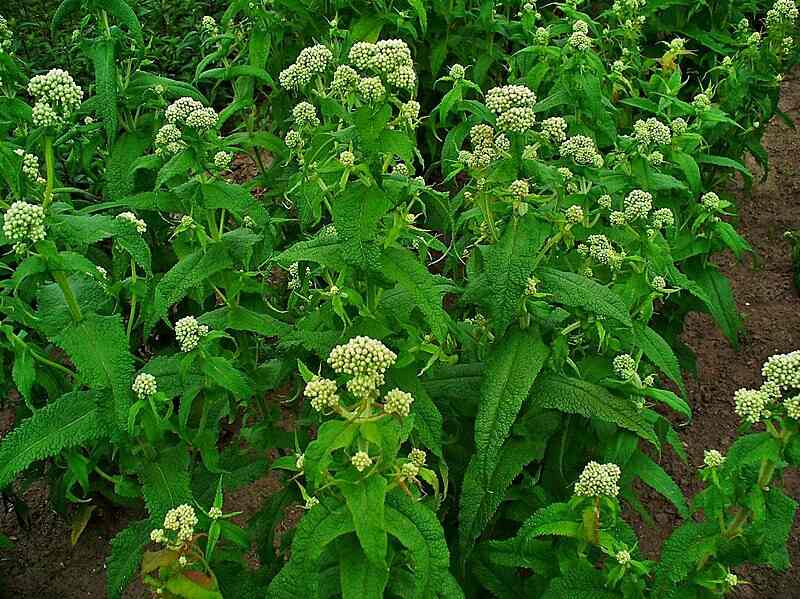
This herb looks beautiful with clusters of small, aromatic, off-white flowers. Boneset blooms from late summer to fall and attracts butterflies and bees. Boneset requires little maintenance and can grow up to 6 feet. It can also prevent deer from entering your lawn.
Boneset grows best in full sun and can tolerate partial shade. It prefers moist soil with good drainage. Historically, American Indians and European settlers used boneset to treat colds and fevers.
- Growth habit: Herb
- Mature size: Up to 6 feet tall and 4 feet wide
- Duration: Perennial
- Foliage: Green, with off-white flowers
- Sunlight needs: Full sun to partial shade
- Soil preferences: Sandy, clay, moist, well-drained soil
- Water needs: High
- Potential hazards: Toxic to humans and pets
4. Buttonbush (Cephalanthus occidentalis)
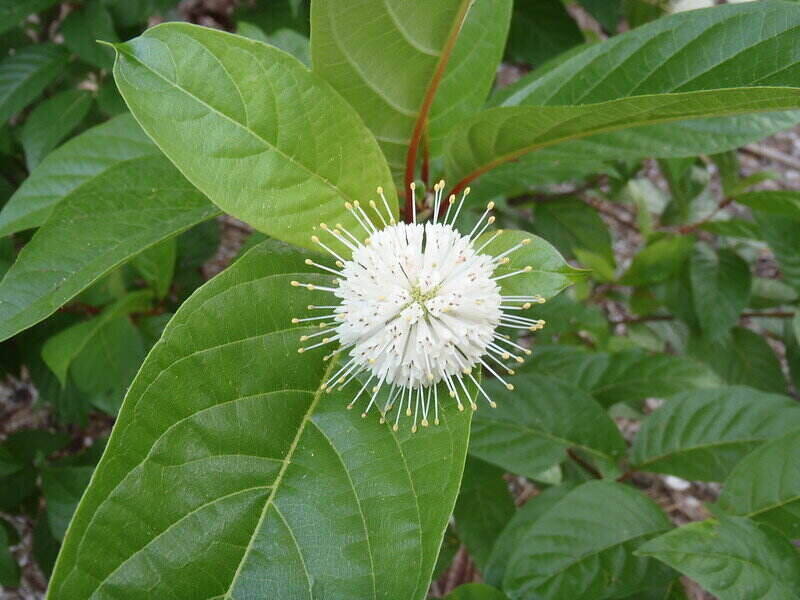
A distinctive shrub with aromatic, tubular, spiky white flowers, buttonbush can grow up to 12 feet tall. It’s a fast-growing plant that blooms from early summer to early fall. Buttonbush grows best in full sun and can tolerate partial shade. Bees and butterflies love the shrub’s flowers.
Buttonbush prefers moist soil with good drainage. It contains cephalathin, making it toxic to humans and pets.
- Growth habit: Shrub
- Mature size: Up to 12 feet tall and 8 feet wide
- Duration: Perennial
- Foliage: Dark green, with white flowers
- Sunlight needs: Full sun to partial shade
- Soil preferences: Sandy, clay, moist, well-drained soil
- Water needs: High
- Potential hazards: Toxic to humans and pets
5. Highbush Blueberry (Vaccinium corymbosum)
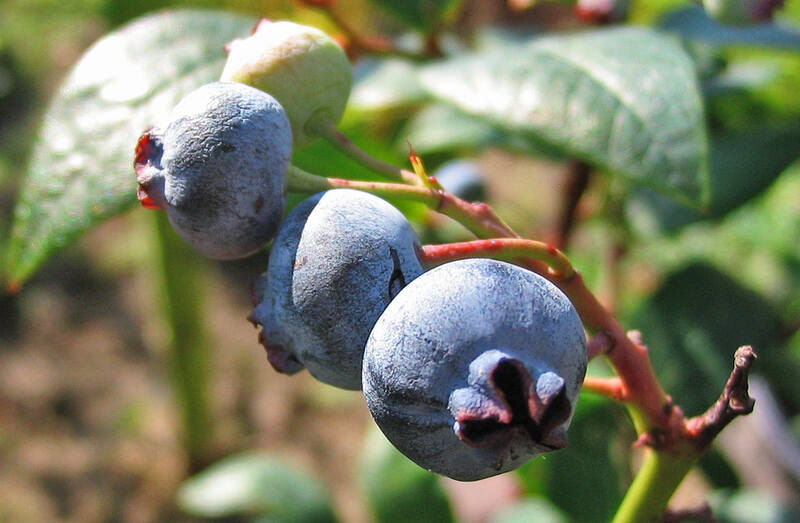
Highbush blueberry is a slow-growing, multi-stemmed deciduous shrub. It grows upright and looks distinctive, with reddish-green spring leaves that turn to blue-green in summer and red in fall. Highbush blueberry requires around an inch of water during fruit development and not more than that. Overwatering can damage the shrub.
Highbush blueberry grows best in full sun and can tolerate partial shade. It prefers moist soil with good drainage. Highbush blueberry blooms throughout the spring and early summer, producing bell-shaped white flowers with a pink hue. Butterflies, bees, and birds love them.
- Growth habit: Shrub
- Mature size: Up to 12 feet tall and 10 feet wide
- Duration: Perennial
- Foliage: Reddish-green in spring, blue-green in summer, and red in fall. White flowers
- Sunlight needs: Full sun to partial shade
- Soil preferences: Moist, well-drained soil
- Water needs: Moderate
- Potential hazards: Non-toxic
6. Labrador Violet (Viola labradorica)
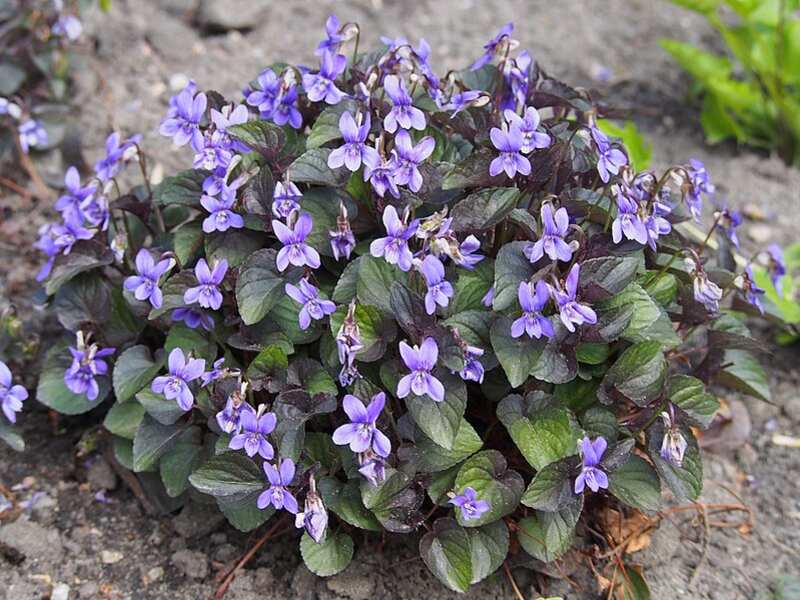
An attractive, long-blooming, low-growing perennial, labrador violet prefers moist soil with good drainage. It blooms from mid-spring to late summer, producing heart-shaped, purple-tinged flowers that birds and butterflies love. You can deadhead to extend blooming even further.
Labrador violet requires about six hours of direct sunlight a day to thrive. It can also tolerate partial shade.
- Growth habit: Herb
- Mature size: Up to 0.5 feet tall and just as wide
- Duration: Perennial
- Foliage: Greenish purple, with purple-tinged flowers
- Sunlight needs: Full sun to partial shade
- Soil preferences: Sandy, loamy, moist, well-drained soil
- Water needs: High
- Potential hazards: Non-toxic
7. Marsh Marigold (Caltha palustris)
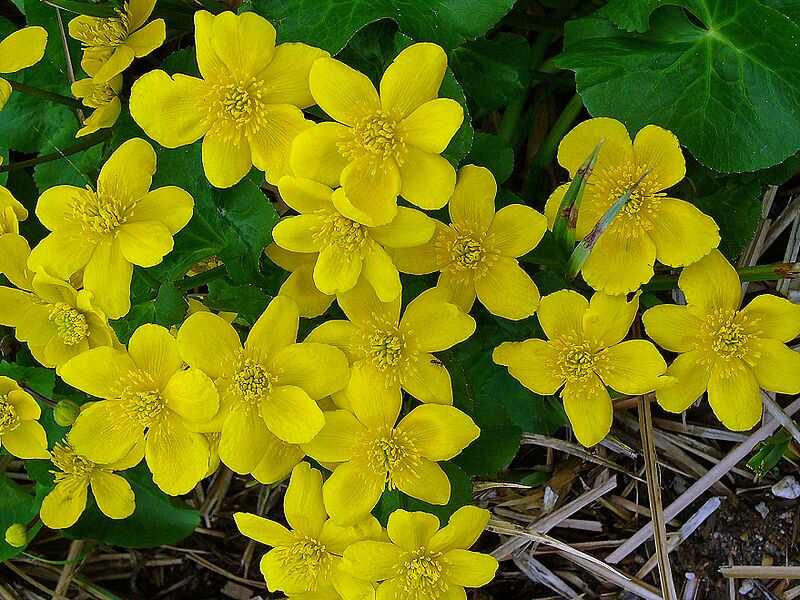
Blooming from early spring to mid-summer, marsh marigold produces clusters of bright yellow flowers that syrphid flies and bees love. It grows best under full sun and prefers moist, acidic soil with good drainage. Marsh marigold is also deer-resistant.
Marsh marigolds feature kidney-shaped, glossy green leaves. This plant is toxic to humans and pets, as the leaves contain protoanemonin.
- Growth habit: Herb
- Mature size: Up to 2 feet tall and 1.5 feet wide
- Duration: Perennial
- Foliage: Green, with bright yellow flowers
- Sunlight needs: Full sun to partial shade
- Soil preferences: Rich, moist, acidic, well-drained soil
- Water needs: High
- Potential hazards: Toxic to humans and pets
8. Mountain Maple (Acer spicatum)
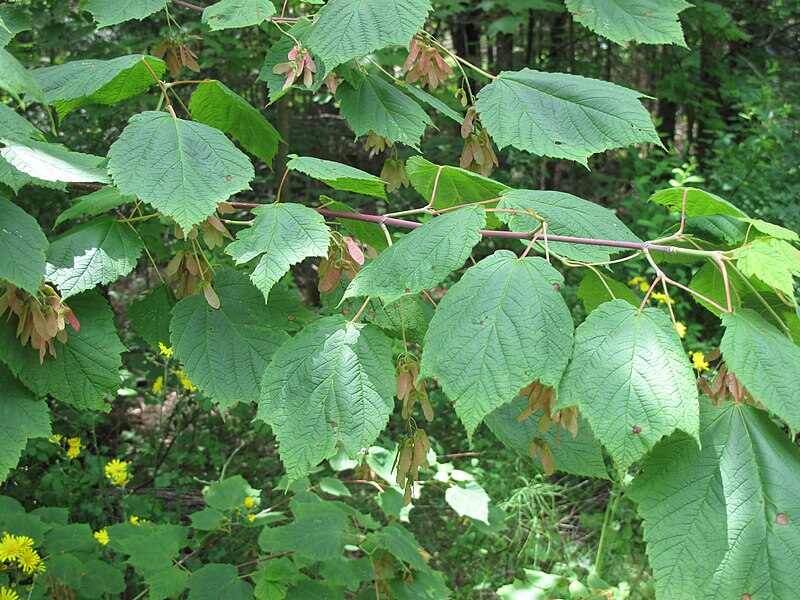
A small understory tree, mountain maple grows best under full sun and prefers moist soil with good drainage. It looks beautiful with its medium-green foliage. The leaves turn reddish-orange during fall. Mountain maple can resist diseases and insects.
Mountain maple blooms during spring, producing clusters of upright spikes of yellow flowers. The tree’s bark is used in leather tanning.
- Growth habit: Tree
- Mature size: Up to 30 feet tall and 15 feet wide
- Duration: Perennial
- Foliage: Medium green, with yellow flowers
- Sunlight needs: Full sun
- Soil preferences: Rich, moist, well-drained soil
- Water needs: Moderate
- Potential hazards: Toxic to humans and pets
9. White Oak (Quercus alba)
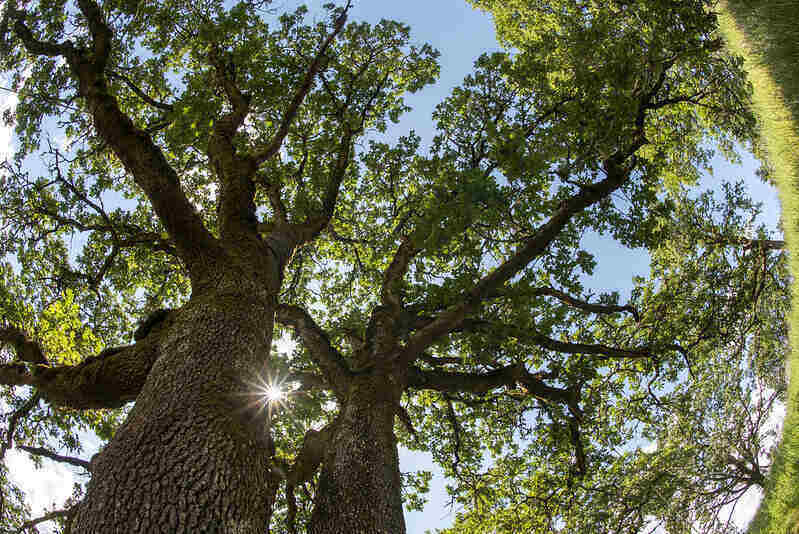
This attractive tree grows dark green leaves that turn red during fall. It’s a large deciduous hardwood that grows up to 100 feet in height and 90 feet wide. Be sure to plan for enough space in your landscaping before planting this tree. White oak is commonly used for making furniture.
White oak comfortably lasts 500 to 600 years. However, it grows at a rate of 2 feet per year, which is pretty slow. White oak is prone to many diseases and pests.
- Growth habit: Tree
- Mature size: Up to 100 feet tall and 90 feet wide
- Duration: Perennial
- Foliage: Dark green in summer and red in fall
- Sunlight needs: Full sun to partial shade
- Soil preferences: Sandy, moist, well-drained soil
- Water needs: Moderate
- Potential hazards: Toxic to humans and pets
10. Winterberry (Ilex verticillata)
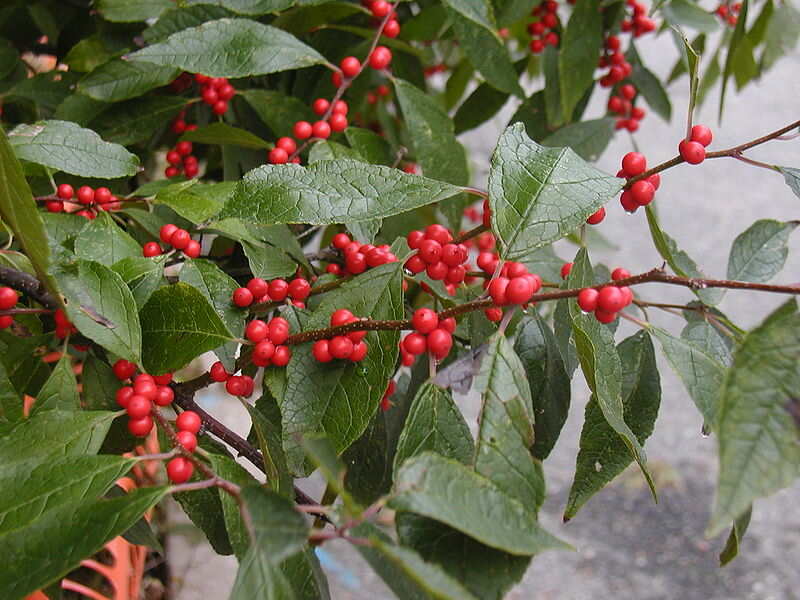
A beautiful, slow-growing shrub, winterberry grows best under full sun. It requires at least four hours of direct sunlight a day. Winterberry prefers moist, well-drained soil with a good level of organic material.
Winterberry blooms from mid-spring to mid-summer, producing delicate and radially symmetrical white flowers arranged in clusters. The flowers mature into bright red berries during fall. The berries persist through the entire winter and even during early spring.
- Growth habit: Shrub
- Mature size: Up to 15 feet tall and 12 feet wide
- Duration: Perennial
- Foliage: Dark green, with white flowers
- Sunlight needs: Full sun to partial shade
- Soil preferences: Sandy, clay, moist, well-drained soil
- Water needs: High
- Potential hazards: Toxic to humans and pets
Native Plants vs. Non-Natives
Native plants are naturally occurring plants that thrive in a region’s climate and soil conditions. These plants need very little help from man to survive the harsh weather conditions New Hampshire often has to endure.
Non-native plants are often imported from other parts of the world that may have incredibly different climates from New Hampshire. These plants can require lots of upkeep as well as fertilizers and pesticides.
Advantages of Native Plants
In general, native plants have many benefits for homeowners:
- They require little maintenance since they thrive naturally in New Hampshire’s climate.
- They can quickly adapt to your lawn’s conditions.
- They provide habitat to birds, butterflies, and other pollinators. They also help preserve biodiversity.
- They need fewer fertilizers and pesticides.
FAQ About Native Plants of New Hampshire
What’s the Best Time to Plant Herbs, Shrubs, and Trees?
Late spring (May) to mid-fall (October) is the best time for planting.
How Many Plants Are Native to New Hampshire?
There are about 1,500 species of native plants in New Hampshire.
Where Can I Purchase Native Plants?
You can buy native plants from local nurseries. Don’t gather these plants from the wild, as it can disrupt the ecosystem.
Call a Lawn Care Pro
All these native plants are well-adapted to New Hampshire’s climate. So, go for a plant that best suits your lawn’s characteristics. Some plants will even flower in New Hampshire’s cold winters. But before you start planting, you’ll need to do a spring clean-up, so be sure you are equipped with key spring lawn care tips for New Hampshire to ensure your plantings have a healthy start.
Make sure to check a plant’s toxicity, especially if you have kids and pets. If a plant is toxic, we recommend you grow it cautiously, such as on the exterior. Also, don’t forget to supplement your native plants with the best grass seed for your New Hampshire lawn.
Proper maintenance is crucial to making your lawn stand out in your neighborhood. If you want a beautiful garden without breaking a sweat, a New Hampshire landscaping expert can help. Whether you’re in Salem, Pelham, Hudson – or anywhere else in the great state of New Hampshire – LawnStarter can connect you with passionate lawn care and landscaping pros with helpful advice.
Main Image Credit: passion4nature / Canva Pro / License